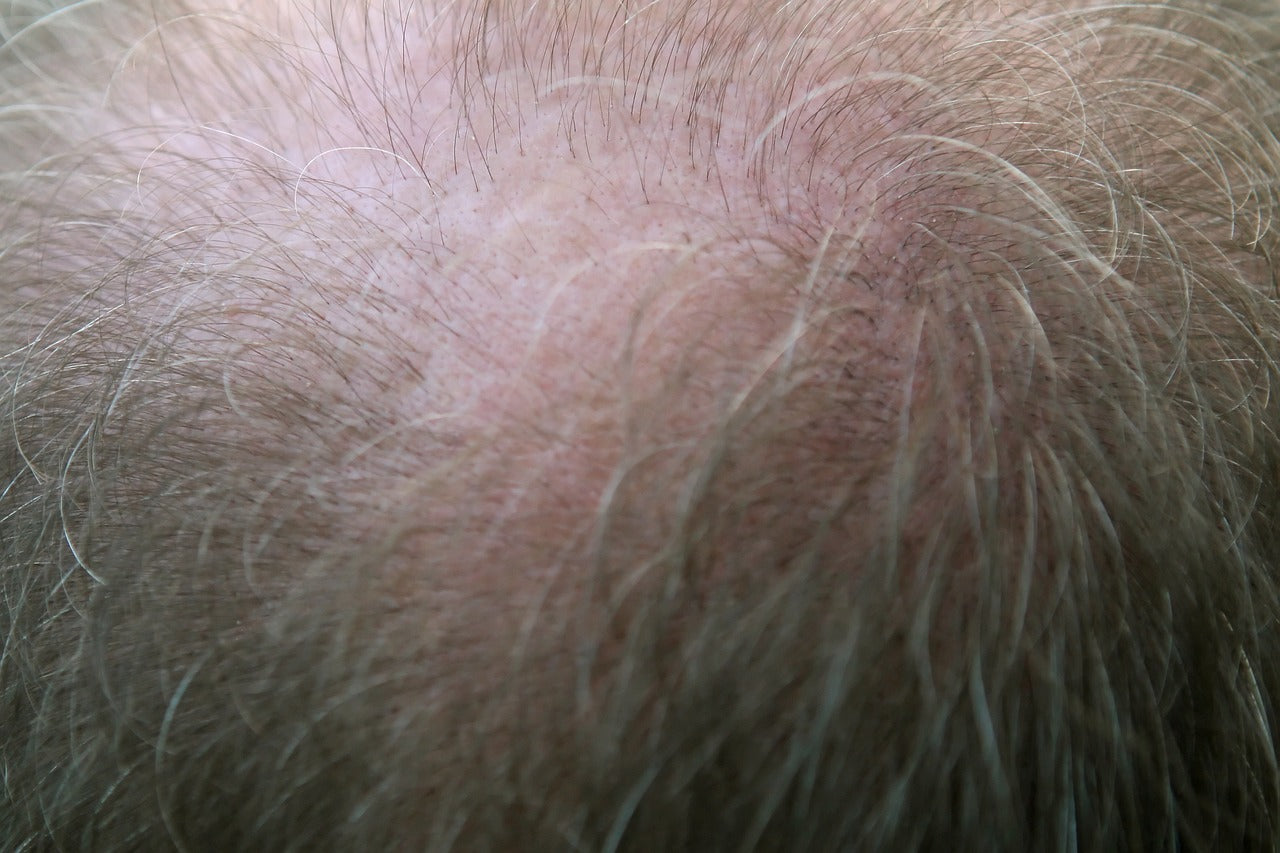Hair loss is a widespread issue, with losing over 100 hairs a day considered a significant concern. Approximately 85% of men and 33% of women will experience hair loss at some point, with male pattern baldness being the primary cause in 95% of cases, often starting early in life. Genetics play a dominant role, but factors like diet, stress, lifestyle, and illness also matter.
Alopecia Areata, a condition causing bald patches, affects two out of every 1,000 people in the UK. Regions like Spain, Italy, and France have a higher prevalence of male hair loss. Beyond its physical impact, hair loss can affect relationships and careers, with 40% of women with alopecia experiencing marriage issues and 63% reporting work-related impacts.
For women in post-menopause, more than half may face hair thinning, and stress significantly increases the likelihood of hair loss, with women leading stressful lives being 11 times more susceptible to this issue.
One key factor behind this common issue is a hormone called Dihydrotestosterone, or DHT. In this blog post, we'll talk about DHT, what it is and how it's linked to hair loss. Understanding this connection is important for those worried about losing their hair. So, let's take a look at DHT for hair loss.
What is DHT?
Dihydrotestosterone, or DHT, is a hormone that holds significance in balancing male characteristics. It is formed in the body through the conversion of testosterone by an enzyme called 5-alpha-reductase. When DHT levels are too high or too low, it can lead to various issues depending on age and stage of sexual development.
This hormone is essential for the sexual development of individuals assigned male at birth (AMAB). Specifically, DHT is an androgen, a hormone that promotes the development of male traits. Its impact changes as individuals progress through different life stages. While scientists are uncertain about how DHT affects those assigned female at birth (AFAB), they speculate it may be involved in body and pubic hair growth.
In adulthood, approximately 10% of testosterone (the primary androgen) is converted into DHT each day. In AMAB individuals, this occurs in the genital skin and prostate, while in AFAB individuals, it happens in the skin. Other parts of the body, such as the liver, also contribute to this conversion.
Naturally, DHT levels are much higher in those AMAB than in those AFAB due to the higher levels of testosterone they naturally have.
In the human body, hair grows in cycles, consisting of growth (anagen), transition (catagen), and rest (telogen) phases. DHT becomes relevant in the hair growth cycle when its levels are elevated. High DHT attaches to hair follicles, mainly those on the scalp, initiating a process known as miniaturization.
During miniaturization, affected hair follicles gradually become smaller, resulting in thinner and weaker hair strands. Over time, this can lead to the cessation of visible hair growth from those follicles, contributing to hair thinning and, eventually, baldness.
Male Sex Characteristics Influenced by DHT:
- Deep voice
- Increased body hair and muscle mass
- Growth of the penis, scrotum, and testicles with the onset of sperm production
- Changes in body fat distribution
As individuals age, both testosterone and DHT continue to contribute positively to the body. These hormones help maintain overall muscle mass and support sexual health and fertility. Notably, men generally have higher testosterone levels, and approximately 10 percent of it is converted to DHT through the action of an enzyme called 5-alpha reductase.
DHT's Impact on Hair and Beyond:
- DHT circulates in the bloodstream and can attach to receptors on scalp hair follicles.
- This attachment causes hair follicles to shrink, leading to reduced support for healthy hair growth.
Potential Harmful Effects of DHT:
- Slow healing of skin after an injury
- Enlarged prostate
- Prostate cancer
- Coronary heart disease
Research has highlighted a connection between high DHT levels, especially when abnormal, and various health issues beyond hair loss.
The Importance of Balanced DHT Levels in Sexual Development
Having Too Little DHT
While high levels of DHT can pose risks, too little DHT can also impact sexual development during puberty. Low DHT may result in delays in the onset of puberty for all sexes. In men, specifically, low DHT can lead to:
- Late or incomplete development of sex organs, such as the penis or testes.
- Changes in body fat distribution, contributing to conditions like gynecomastia.
- Increased risk of developing aggressive prostate tumors.
Differential Effects of DHT
DHT affects individuals differently, influenced by genetic factors inherited from family members. For instance, if male pattern balding runs in your family, it's likely that you may experience a similar pattern of balding as you age. Those already predisposed to male pattern baldness may experience a more pronounced effect of DHT on shrinking hair follicles.
Beyond genetics, the size and shape of your head may play a role in determining how quickly DHT affects follicles. Understanding these individual factors can contribute to a more nuanced comprehension of the impact of DHT on sexual development and hair-related issues.
The Link Between DHT and Hair Loss
Your body's hair growth is intricately connected to tiny structures called follicles beneath your skin. Each follicle houses a single hair strand, and the hair within a follicle undergoes a growth cycle lasting two to six years. Even after cutting or shaving, the same hair regrows from the root within the follicle.
As this cycle concludes, hair enters a resting phase before eventually falling out a few months later. Subsequently, a new hair emerges, and the cycle restarts. However, high levels of androgens, including DHT (dihydrotestosterone), can impact this process.
DHT has the ability to shrink hair follicles and shorten the growth cycle, resulting in thinner and more brittle hair that falls out at a faster rate. Additionally, DHT may extend the time it takes for follicles to generate new hairs after the shedding of old ones.
Individual susceptibility to the effects of DHT on scalp hair varies, often influenced by genetic factors such as variations in the androgen receptor (AR) gene. Androgen receptors, essential for hormonal processes like body hair growth, can be influenced by these genetic variations, potentially increasing the likelihood of experiencing male pattern hair loss.

Effectively Reducing DHT Levels for Hair Health
There are two primary types of medications:
DHT Blockers:
- These medications prevent DHT from binding to 5-AR receptors, including those in hair follicles, thus preventing DHT from shrinking the follicles.
DHT Inhibitors:
- These medications work by reducing the body's production of DHT.
Medications to Consider
1. Finasteride:
- Type: Oral prescription medication.
- Function: Binds to 5-AR proteins, blocking DHT from binding and preventing follicle shrinkage.
- Success Rate: Documented at least 87% in a 2012 study on 3,177 men.
- Side Effects: Few noted side effects reported.
2. Minoxidil (Rogaine):
- Type: Topical application.
- Function: Peripheral vasodilator, widens blood vessels to enhance blood flow.
- Usage: Originally a blood pressure medication, but when applied topically, it promotes scalp blood circulation and hair growth.
3. Biotin:
- Type: Oral supplement or naturally present in certain foods.
- Function: B vitamin that supports energy conversion and maintains keratin levels.
- Benefits: Research suggests it aids in hair regrowth and prevents hair loss.
- Sources: Found in egg yolks, nuts, and whole grains.
Dietary Considerations:
1. Omega-3 Fatty Acids:
- Consume foods rich in omega-3 fatty acids, such as fatty fish (salmon, mackerel), chia seeds, and flaxseeds. These support overall hair health and can potentially help regulate DHT levels.
2. Saw Palmetto:
- Some studies suggest that saw palmetto, a plant extract, may help inhibit the activity of 5-alpha reductase, the enzyme responsible for converting testosterone to DHT. Consider adding saw palmetto supplements or including it in your diet after consulting with a healthcare professional.
3. Green Tea:
- Green tea contains compounds that may have anti-androgenic properties, potentially helping to reduce DHT levels. Regular consumption of green tea can be a part of a holistic approach to hair health.
4. Zinc-Rich Foods:
- Zinc is essential for maintaining healthy hair. Include zinc-rich foods like oysters, pumpkin seeds, and legumes in your diet.
5. Vitamin D:
- Ensure you have adequate vitamin D levels, either through sunlight exposure or supplements. Vitamin D plays a role in hair follicle health.
Latest Treatments
RU58841
- RU58841 is an experimental topical anti-androgen that shows promising results in inhibiting the effects of DHT on hair follicles. However, its long-term safety and efficacy are still being researched, and it's not yet widely available or approved.
Laser Therapy
- Low-level laser therapy (LLLT) devices are gaining popularity for their potential to stimulate hair follicles and promote hair growth. While research is ongoing, some individuals report positive results.
Lifestyle Habits
Stress Management:
- Chronic stress can result in hormonal imbalances that potentially affects DHT levels. Practice stress-reduction techniques such as meditation, yoga, or regular exercise.
Regular Exercise:
- Regular physical activity promotes overall well-being. It can help regulate hormones and improve blood circulation to benefit the health of your scalp and hair.

More About RU58841
RU58841 - a special substance made to tackle the impact of DHT on your hair. Instead of being a pill or injection, RU58841 is a liquid that you apply directly to your scalp. It works by sticking to certain receptors on your scalp, sort of like a shield. This shield helps to block DHT from affecting your hair follicles.
In simple terms, RU58841 tries to stop DHT from making your hair follicles shrink, which is one of the main reasons for hair thinning. By applying RU58841, the goal is to give your hair a better chance to grow and stay healthy.
How RU58841 Works to Inhibit DHT
RU58841 works as an anti-androgen. It is potentially effective for conditions influenced by androgens, like acne and androgenic alopecia (hair loss caused by androgens). Hair loss is often caused by DHT's impact on hair follicles, and many anti-androgenic drugs aim to reduce or block DHT production. RU58841, however, takes a different approach.
Instead of decreasing DHT production, RU58841 competes with DHT by binding to its receptors and prevent DHT from attaching itself. This unique mechanism avoids the systemic side effects seen in some anti-androgenic medications, like sexual side effects linked to lowered DHT production.
Similar to finasteride but without the reported side effects, RU58841 shows several positive effects:
- Inhibits the hair-thinning effects of DHT.
- Increases the percentage of hair growth in the anagen phase.
- Improves hair density and diameter.
The safety and effectiveness of RU58841 seem impressive, with noticeable effects reported by users.
Some Risks and Side Effects:
Experimental Nature:
RU58841 is still considered an experimental drug and lacks official FDA approval. Its long-term safety and efficacy require further research and validation.
Limited Availability:
Due to its experimental status, RU58841 may not be readily available through conventional channels. Access is often limited to research settings. But here at MV Supplement, we deliver it to your doorstep.
Insufficient Scientific Validation:
While studies suggest positive outcomes, there's a lack of comprehensive certifications to validate the claimed benefits. Many reports are from individuals who may already be using other hair-loss medications.
Individual Variances:
Responses to RU58841 may vary among individuals. Factors such as genetic predisposition, overall health, and existing medications can influence its effectiveness and potential side effects.
Unforeseen Long-Term Effects:
Since RU58841 is relatively new and its long-term effects aren't fully understood, there's a level of uncertainty regarding unforeseen consequences or complications with extended use.
Conclusion
To sum up, RU58841 is like a targeted solution to fight against DHT. It works on the scalp to stop DHT from causing problems with hair follicles. But, like anything you use, it has its own drawbacks. With this knowledge about DHT and RU58841, now you're capable enough to decide what might work best for your hair health.
If you're considering trying out RU58841 and you're in Europe, your choice should be MV Supplement. We deliver across Europe, making it convenient for individuals seeking this particular solution for hair loss.
For more information or to explore RU58841 as part of your hair care routine, visit MV Supplement's website and know how we can assist you on your journey to healthier, fuller hair.




Leave a comment
This site is protected by hCaptcha and the hCaptcha Privacy Policy and Terms of Service apply.